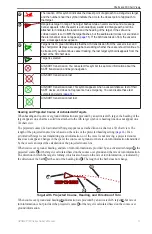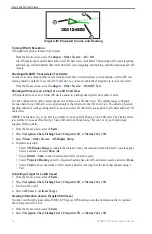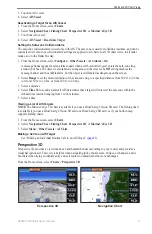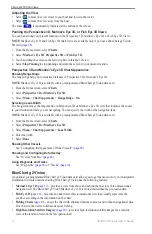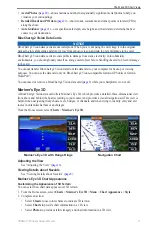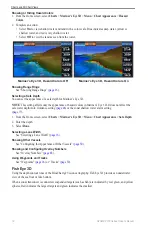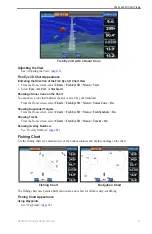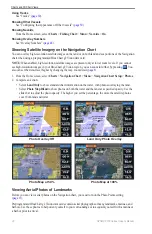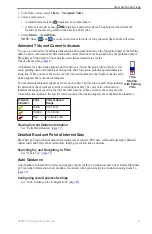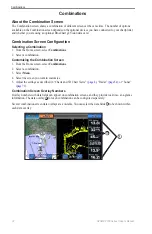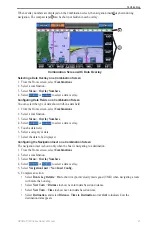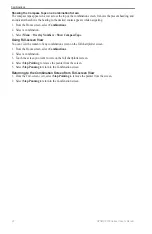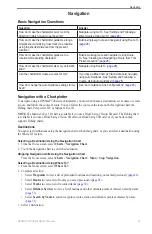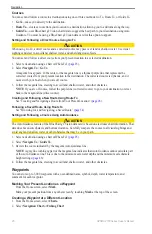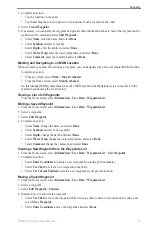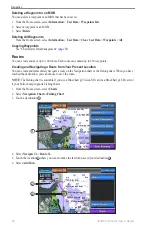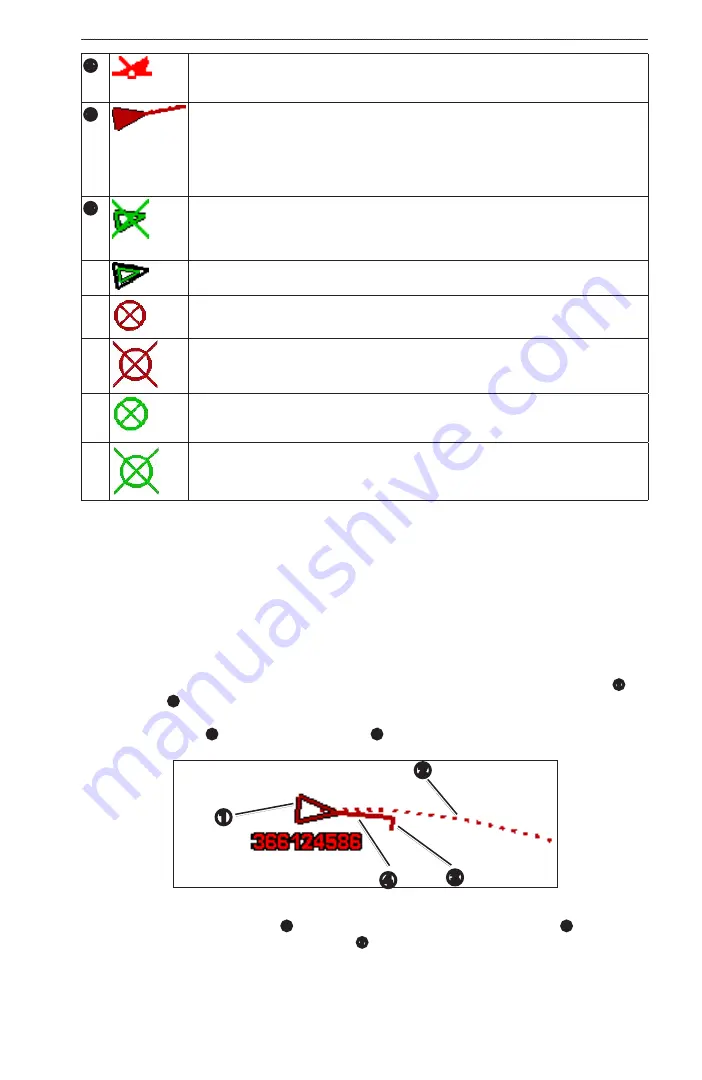
GPSMAP 700 Series Owner’s Manual
13
Charts and 3D Chart Views
➍
The location of this symbol indicates the closest point of approach to a dangerous target,
and the numbers near the symbol indicate the time to the closest point of approach to
that target.
➎
Dangerous target in range. The target flashes while an alarm sounds and a message
banner appears. After the alarm is acknowledged, a solid red triangle with a red line
attached to it indicates the location and the heading of the target. If the safe-zone
collision alarm is set to
Off
, the target flashes, but the audible alarm does not sound and
the alarm banner does not appear (
). If the AIS transmission from the vessel is
lost, a message banner appears.
➏
Target is lost. A green
X
indicates that the AIS transmission from the vessel is lost, and
the chartplotter displays a message banner asking whether the vessel should continue to
be tracked. If you discontinue vessel tracking, the lost target symbol disappears from the
chart or the 3D chart view.
Target is selected.
AIS-SART transmission. You can select this symbol to see more information about the
SART transmission and begin navigation.
AIS-SART transmission lost.
AIS-SART transmission test. This symbol appears when a vessel initiates a test of their
SART device, and does not represent a true emergency. You can disable these test
AIS-SART transmission test lost.
Heading and Projected Course of Activated AIS Targets
When heading and course over ground information are provided by an activated AIS target, the heading of the
target appears on a chart as a solid line attached to the AIS target symbol. A heading line does not appear on a
3D chart view.
The projected course of an activated AIS target appears as a dashed line on a chart or a 3D chart view. The
length of the projected course line is based on the value of the projected heading setting (
activated AIS target is not transmitting speed information, or if the vessel is not moving, a projected course
line does not appear. Changes in the speed, the course over ground, or the rate-of-turn information transmitted
by the vessel can impact the calculation of the projected course line.
When course over ground, heading, and rate of turn information are provided by an activated AIS target
➊
, the
projected course
➋
of the target is calculated based on the course over ground and the rate of turn information.
The direction in which the target is turning, which is also based on the rate of turn information, is indicated by
the direction of the barb
➌
at the end of the heading line
➍
. The length of the barb does not change.
➍
➌
➋
➊
Target with Projected Course, Heading, and Direction of Turn
When course over ground and heading
➎
information are provided by an activated AIS target
➏
but rate of
turn information is not provided, the projected course
➐
of the target is calculated based on the course over
ground information.















